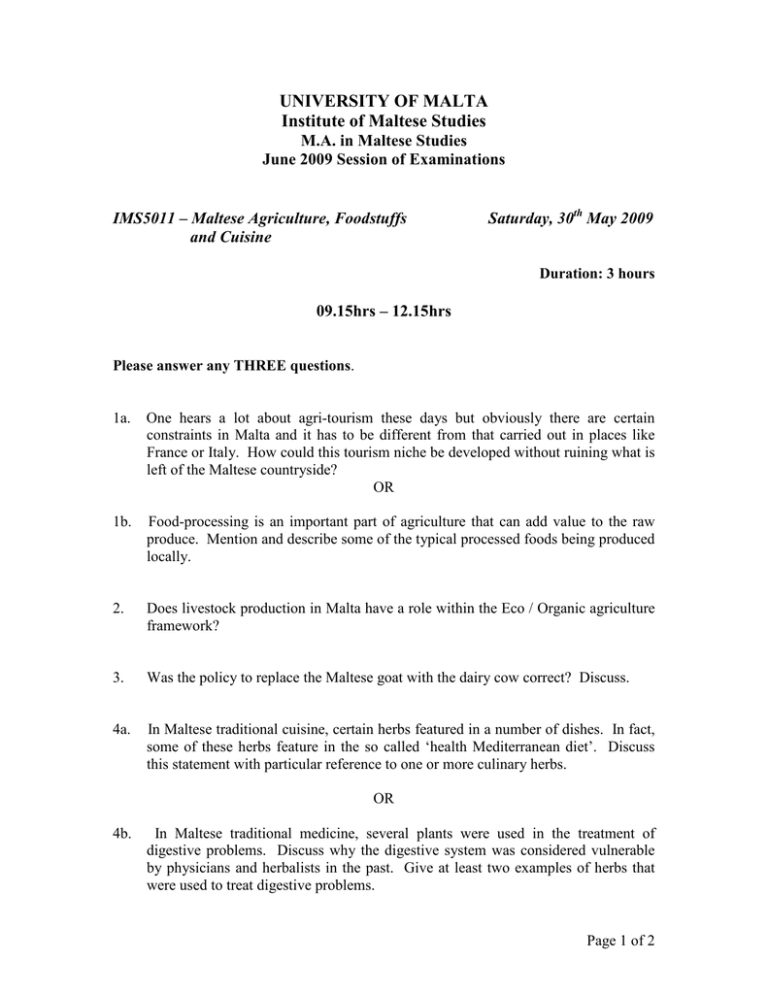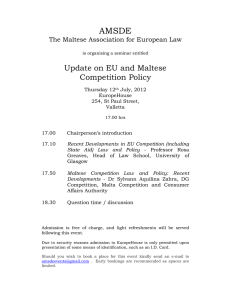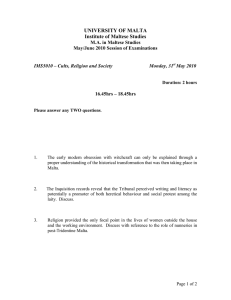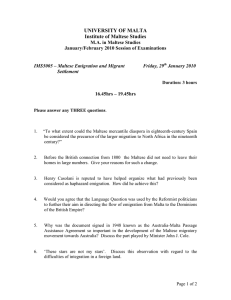UNIVERSITY OF MALTA Institute of Maltese Studies M.A. in Maltese Studies
advertisement

UNIVERSITY OF MALTA Institute of Maltese Studies M.A. in Maltese Studies June 2009 Session of Examinations IMS5011 – Maltese Agriculture, Foodstuffs and Cuisine Saturday, 30th May 2009 Duration: 3 hours 09.15hrs – 12.15hrs Please answer any THREE questions. 1a. One hears a lot about agri-tourism these days but obviously there are certain constraints in Malta and it has to be different from that carried out in places like France or Italy. How could this tourism niche be developed without ruining what is left of the Maltese countryside? OR 1b. Food-processing is an important part of agriculture that can add value to the raw produce. Mention and describe some of the typical processed foods being produced locally. 2. Does livestock production in Malta have a role within the Eco / Organic agriculture framework? 3. Was the policy to replace the Maltese goat with the dairy cow correct? Discuss. 4a. In Maltese traditional cuisine, certain herbs featured in a number of dishes. In fact, some of these herbs feature in the so called ‘health Mediterranean diet’. Discuss this statement with particular reference to one or more culinary herbs. OR 4b. In Maltese traditional medicine, several plants were used in the treatment of digestive problems. Discuss why the digestive system was considered vulnerable by physicians and herbalists in the past. Give at least two examples of herbs that were used to treat digestive problems. Page 1 of 2 5. ‘Until the early 20th century Maltese society was heavily dependent on agricultural produce’. Assess with reference to the economic and social causes of famine, fasting and feasting. 6. ‘It was under British rule, during a phase of national self-identification, that fenkata seems to have become synonymous with Maltese culture.’ Discuss. 7a. Describe the strengths and weaknesses of the Maltese agricultural sector. OR 7b. In Malta, rural areas are not economically disadvantaged when compared to urban areas; however there is always room for improvement in certain respects. What are the threats to rural areas, and how could rural areas be improved? Page 1 of 2



